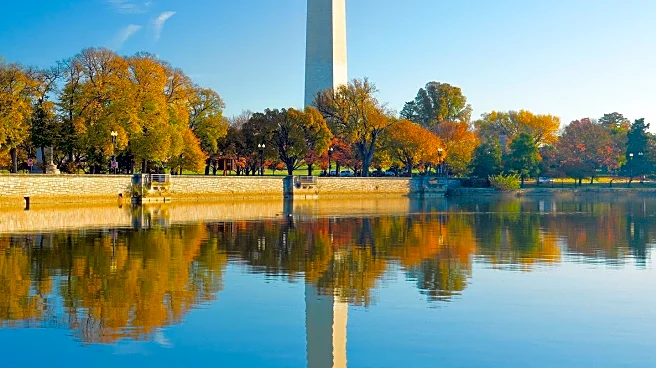What's Happening?
Maryland is experiencing a shift in weather patterns as the weekend concludes. The state is set to have a warm and breezy day with temperatures reaching the 70s. However, the weather is expected to change
later in the evening with showers anticipated. This transition follows a period of cooler weather, marking a return to more typical autumn conditions. The forecast suggests that residents should prepare for a chilly start to the day, which will gradually warm up before the evening showers. This weather update is part of a broader pattern of unsettled weather affecting the region.
Why It's Important?
The weather changes in Maryland are significant for residents and local businesses, particularly those in agriculture and outdoor activities. The warm temperatures during the day provide an opportunity for outdoor events and activities, while the evening showers may require adjustments for those planning to be outside. Businesses that rely on foot traffic, such as restaurants and retail stores, may see fluctuations in customer numbers based on the weather conditions. Additionally, the shift from cooler to warmer weather and back to showers can impact energy consumption patterns, as residents adjust their heating and cooling needs.
What's Next?
Residents and businesses in Maryland should stay informed about the weather forecasts to plan their activities accordingly. The evening showers may lead to wet roads, requiring caution for drivers. Local authorities and weather services will continue to monitor the situation and provide updates as necessary. As the state transitions into autumn, further changes in weather patterns are expected, which could include more frequent rain and cooler temperatures. This ongoing weather monitoring is crucial for ensuring public safety and minimizing disruptions.
Beyond the Headlines
The weather patterns in Maryland reflect broader climate trends that are affecting regions across the United States. The fluctuations between warm and cool temperatures, along with increased precipitation, may be indicative of changing climate conditions. These shifts can have long-term implications for local ecosystems, agriculture, and water resources. Understanding and adapting to these changes is essential for sustainable development and environmental conservation efforts in the state.












